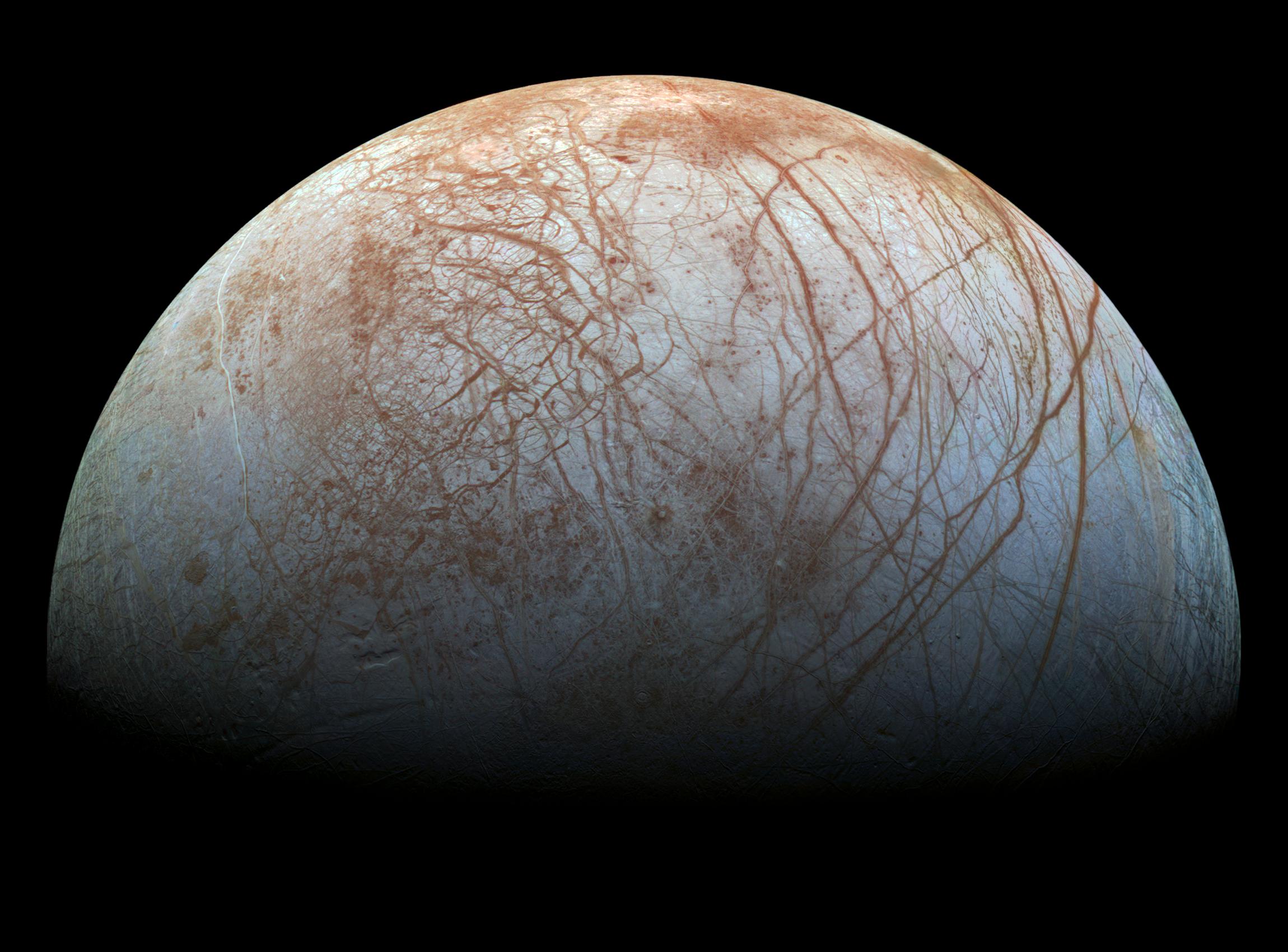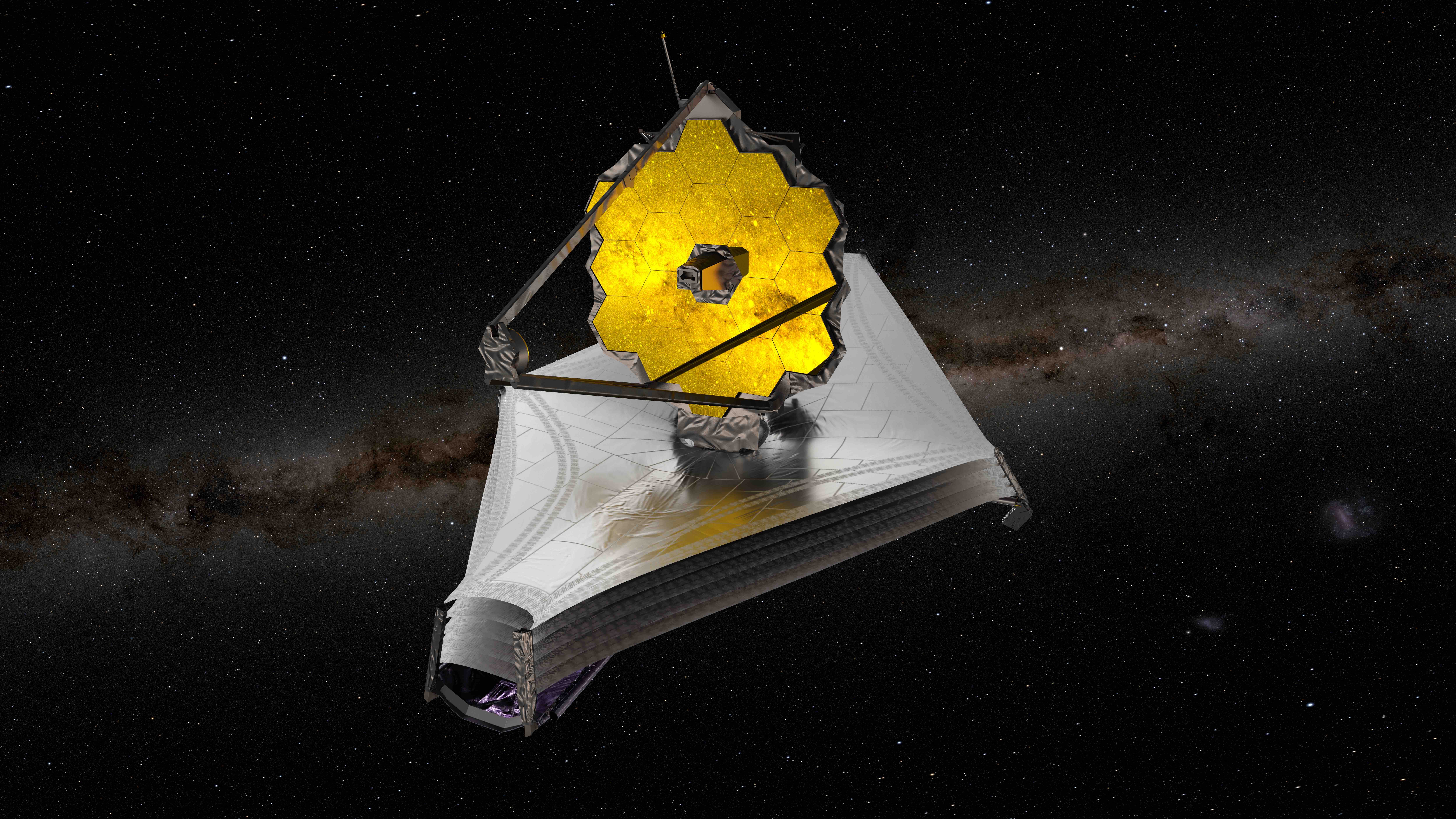Astronomers spot carbon on the surface of Jupiter’s icy moon Europa!

This photo of Europa was taken by Webb, using its special Near Infrared Camera. It may look a bit strange to our eyes, but this camera sees things we cannot normally detect! The large white area in the middle and to the right is Taro Regio, where the carbon was detected. Credit: NASA, ESA, CSA, G. Villanueva (NASA/GSFC), S. Trumbo (Cornell Univ.), A. Pagan (STScI).
26 September 2023
Earth is a haven for life, but could other worlds in our Solar System be home to simple organisms? We have known for a long time that Jupiter’s moon Europa has an ocean of salty water and a rocky seafloor. However, this strange ocean is hidden under a thick icy crust, so whether it contains any of the ingredients needed for life has been a mystery – until now!
Astronomers using the James Webb Space Telescope to study Europa have made an amazing discovery: signs of carbon dioxide on the moon’s surface! This is very exciting because carbon is thought to be essential for life. Finding it does not mean that life has been discovered, but it is a sign that life could possibly be present.

This photo of Europa (taken by NASA’s Galileo probe) shows the moon’s icy surface as it naturally looks to our eyes, instead of the infrared view given by Webb. The dark lines are cracks. Could the carbon have come up from the ocean, through the cracks, and settled on the surface? Credit: NASA/JPL-Caltech/SETI Institute.
Carbon dioxide does not last very long on the moon’s surface, so it must have been delivered there quite recently – but how? The carbon was detected in an area called Taro Regio, where the surface ice seems to be relatively fresh. This is a clue that water from the secret ocean has managed to break through the moon’s crust, perhaps through cracks, and made its way to the surface. So, the carbon likely came from the ocean. This is backed up by Hubble Space Telescope observations of Taro Regio, which show salt from the ocean on the surface.
This is particularly exciting, because drilling through the icy crust to explore the ocean would be incredibly difficult. If samples of the ocean are blasting out of the ice and onto Taro Regio, as seems to be happening, then it will be easier for us to study.
The scientists hope that we can follow up these findings with observations from ESA’s Jupiter Icy Moons Explorer (JUICE), which launched in April 2023. JUICE will be making detailed observations of Europa, as well as two other icy moons: Ganymede and Callisto. Getting a closer look at Europa should help us determine how suitable it is for life.
Do you think there could be alien life in Europa’s secret ocean? If so, what would it look like?
Cool fact: Webb is the largest, most powerful telescope ever launched into space! It is operated jointly by NASA, ESA and the Canadian Space Agency (CSA).





